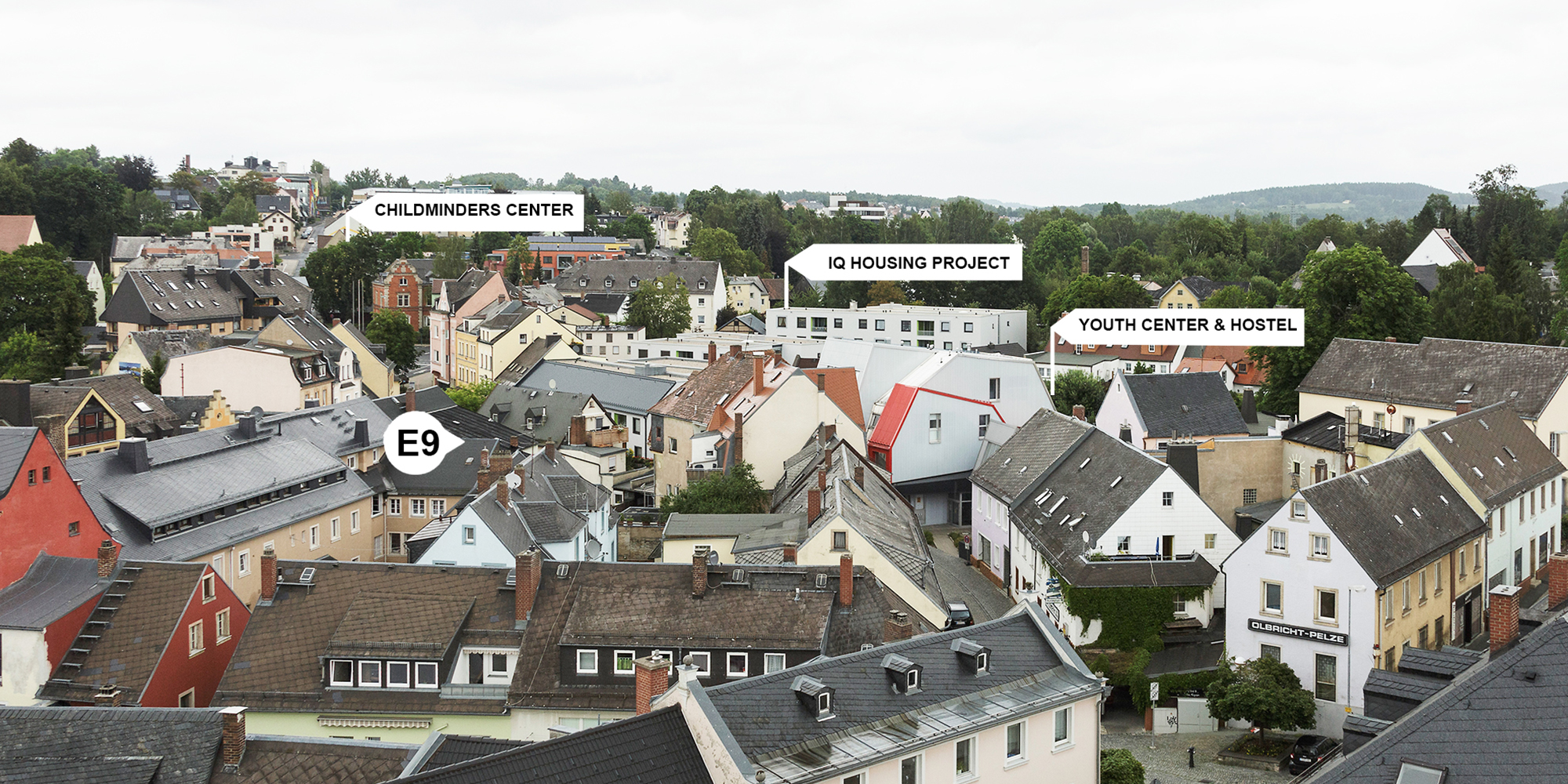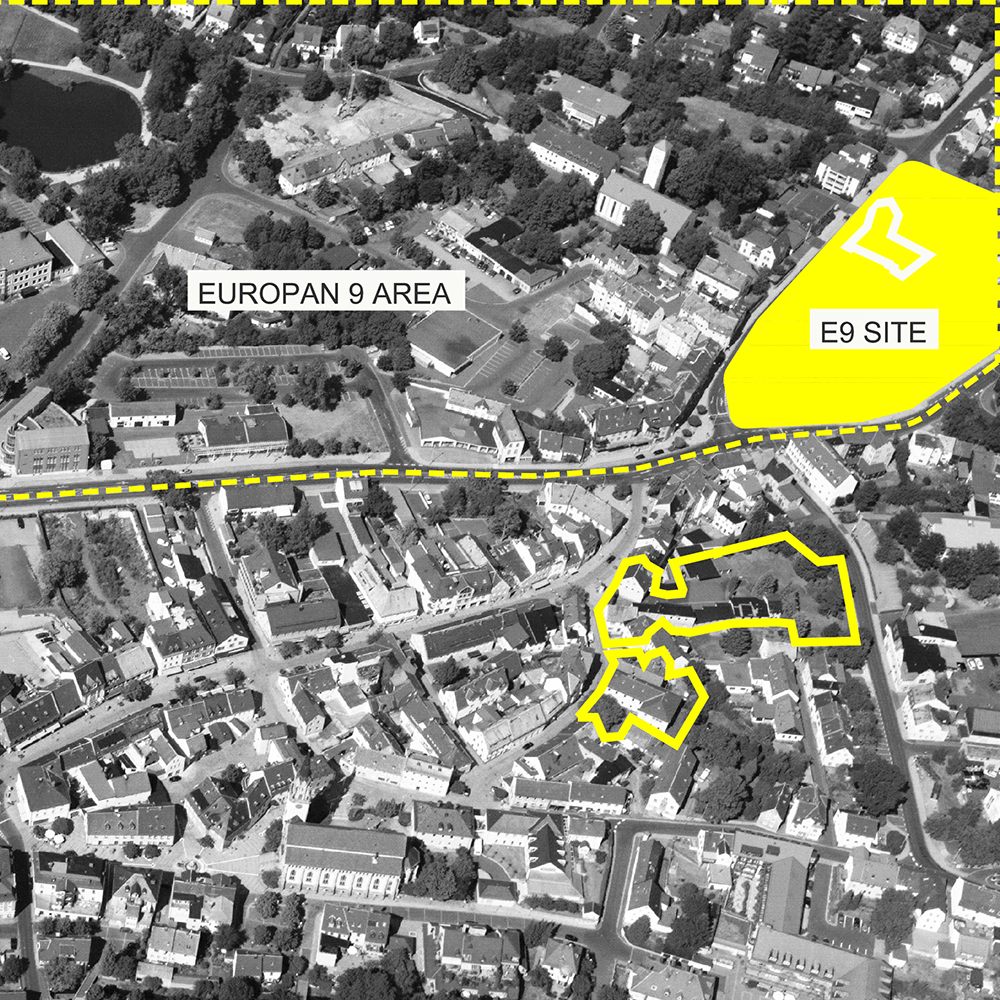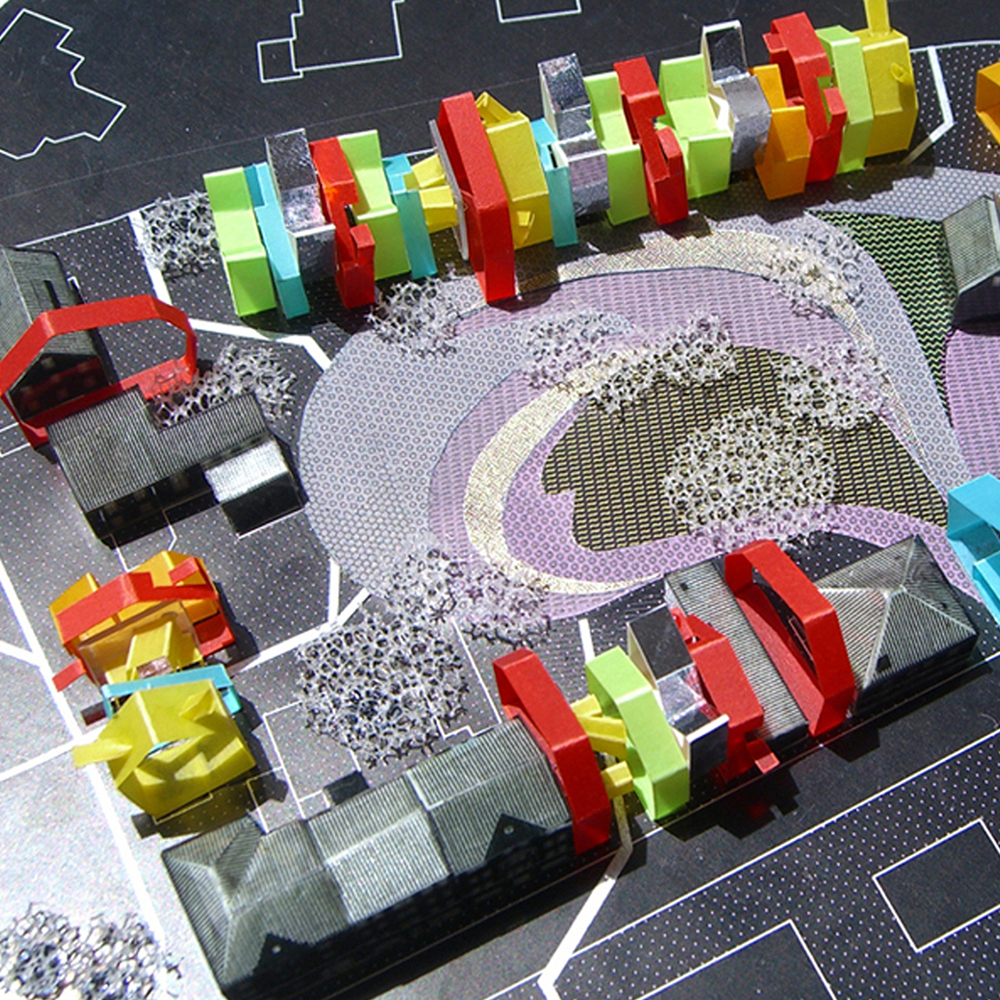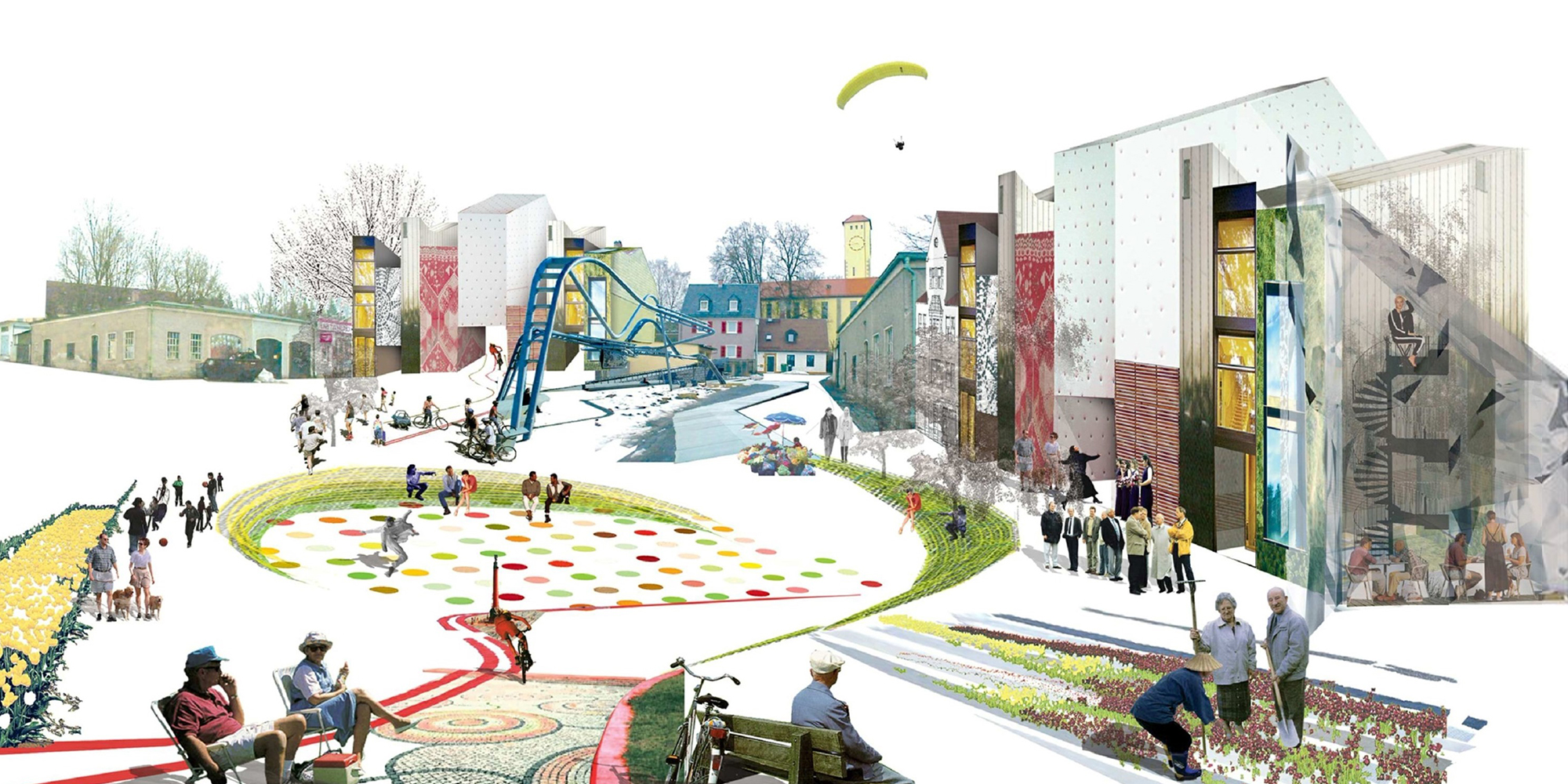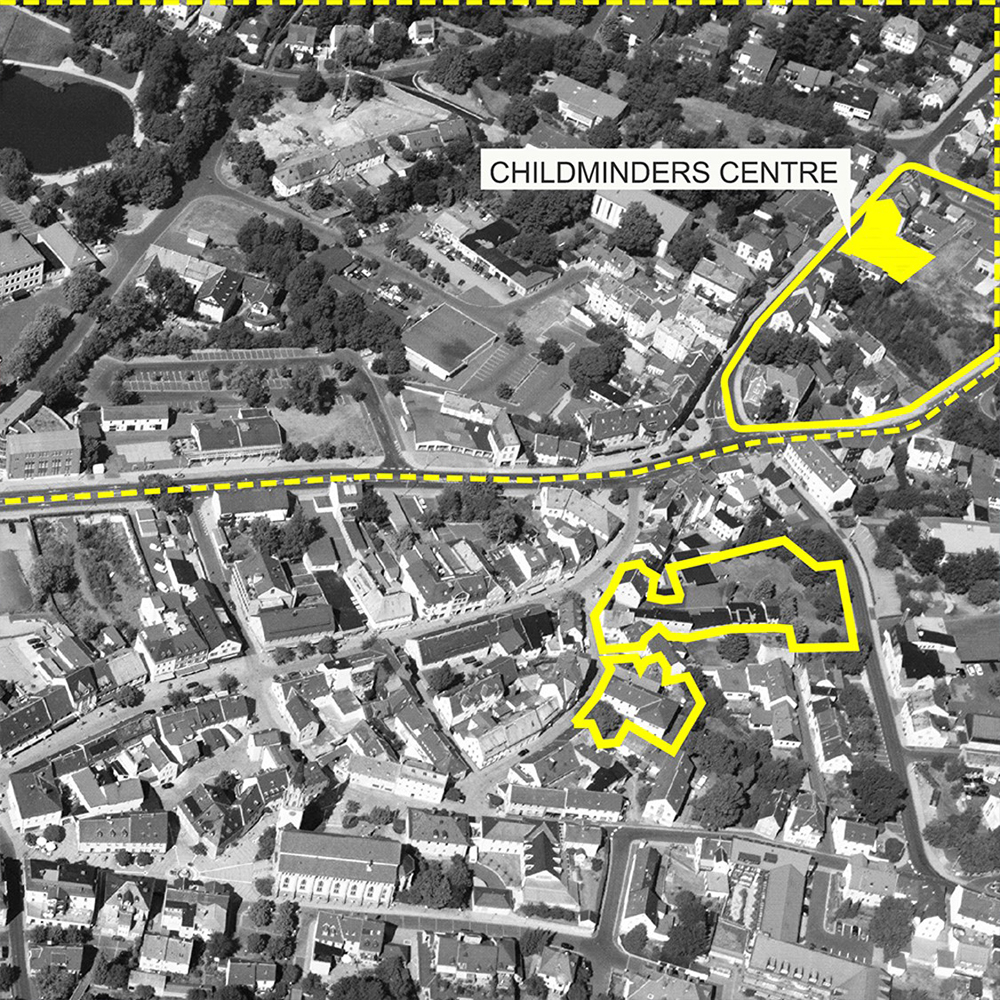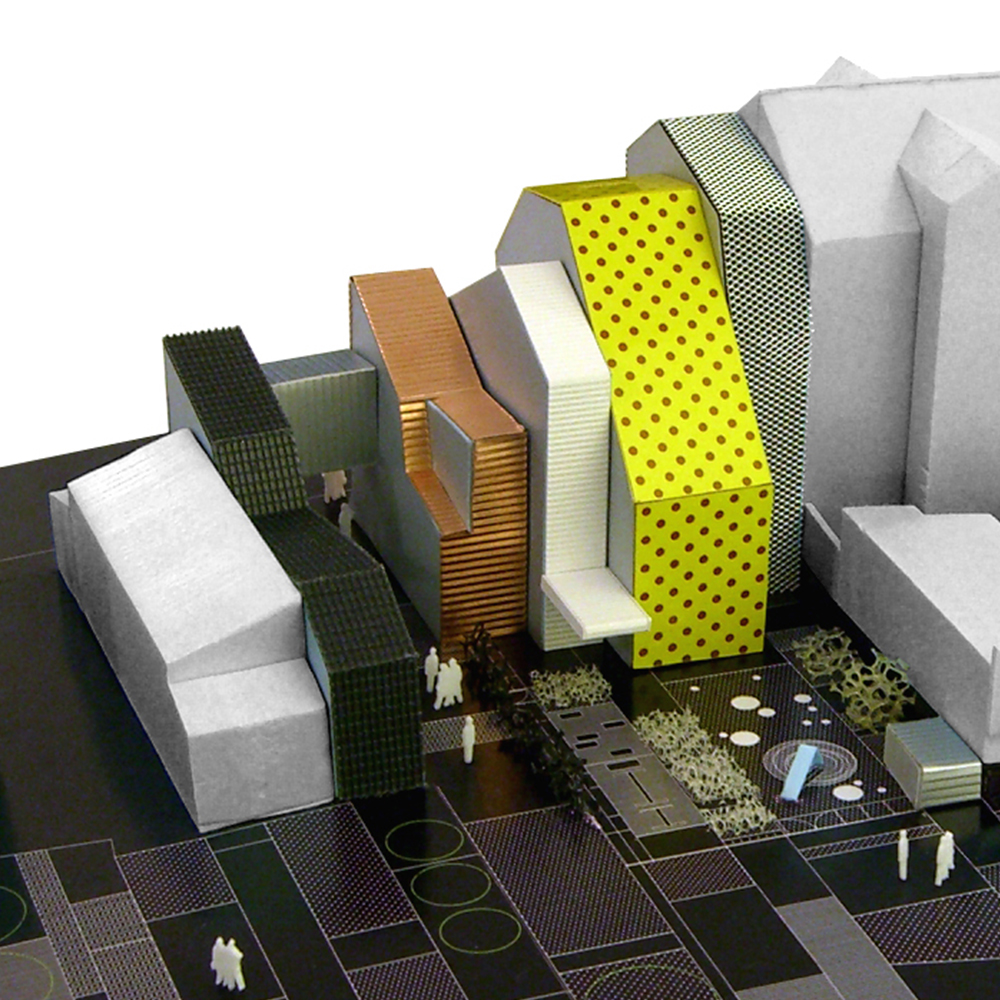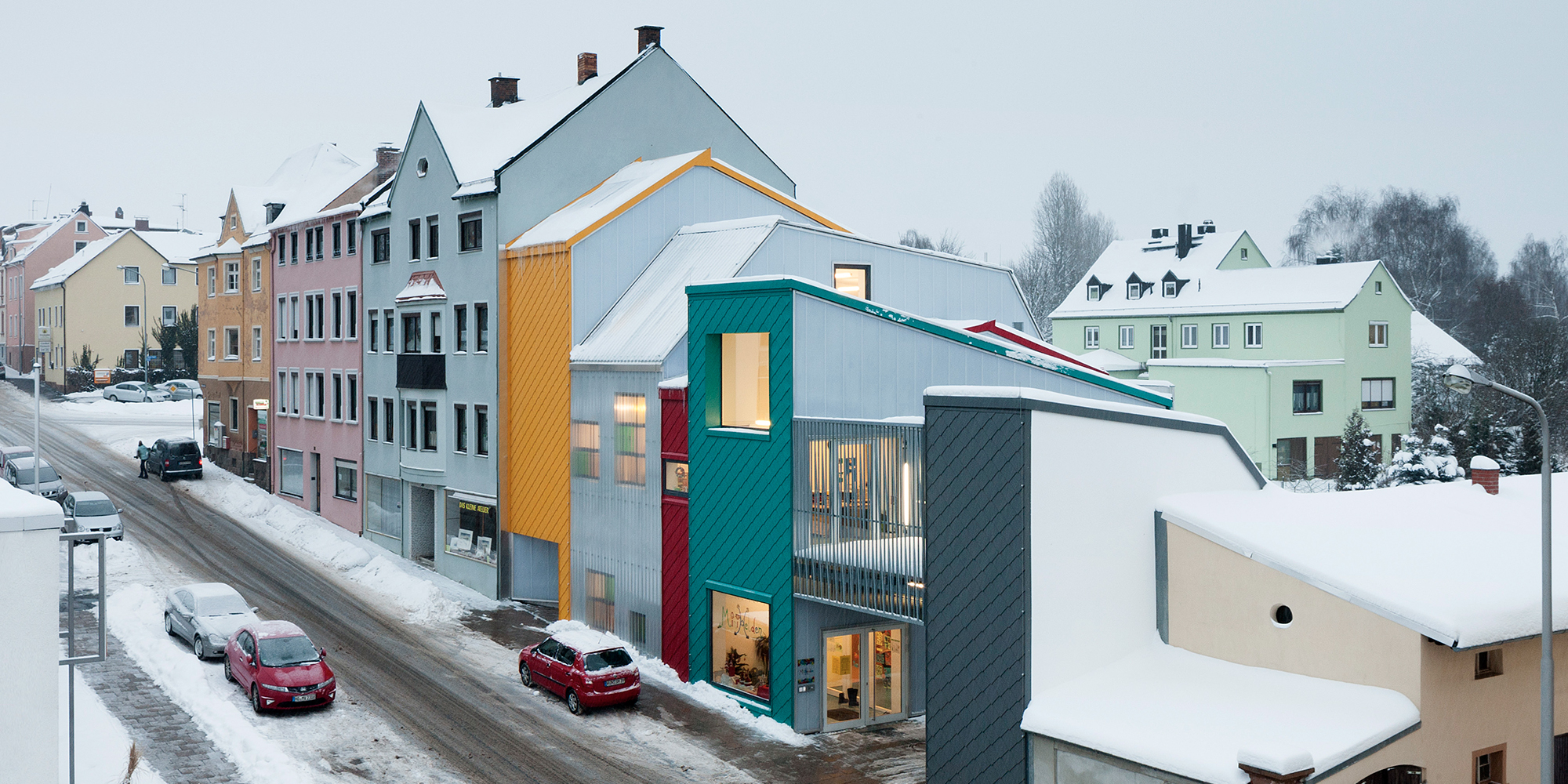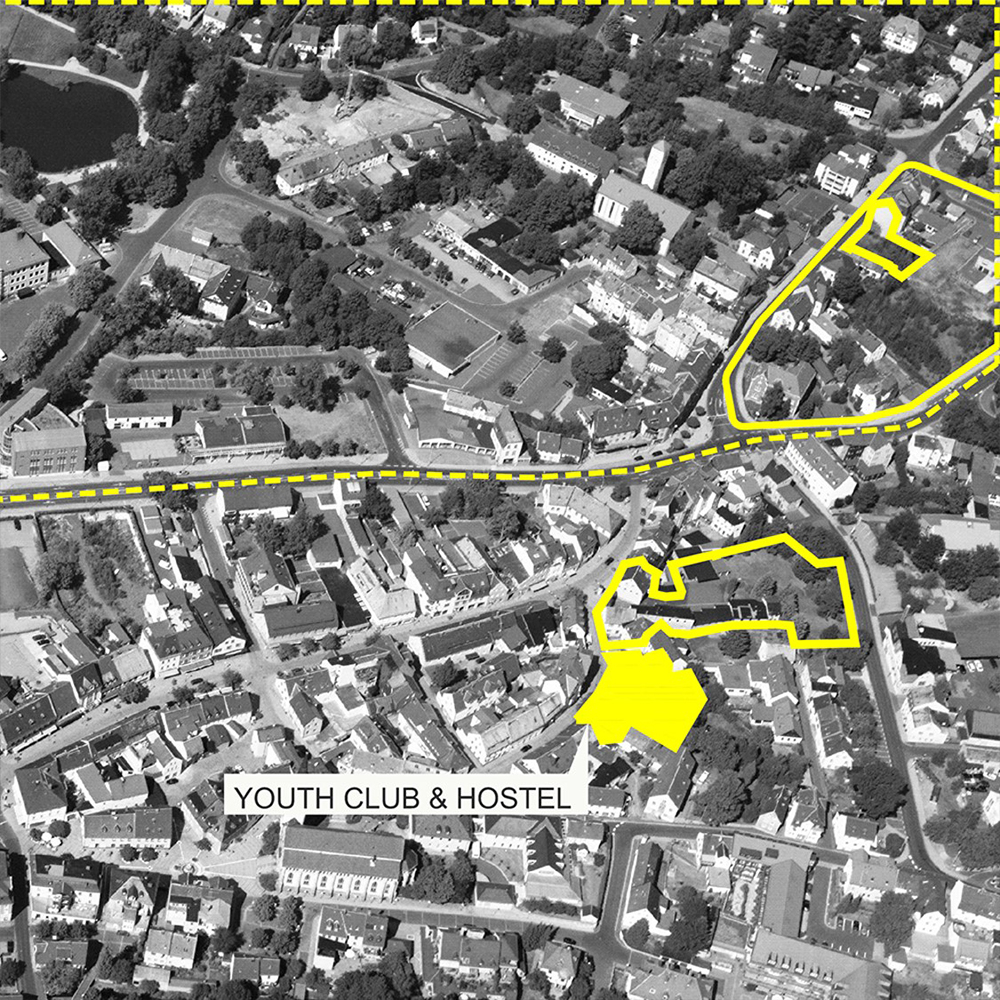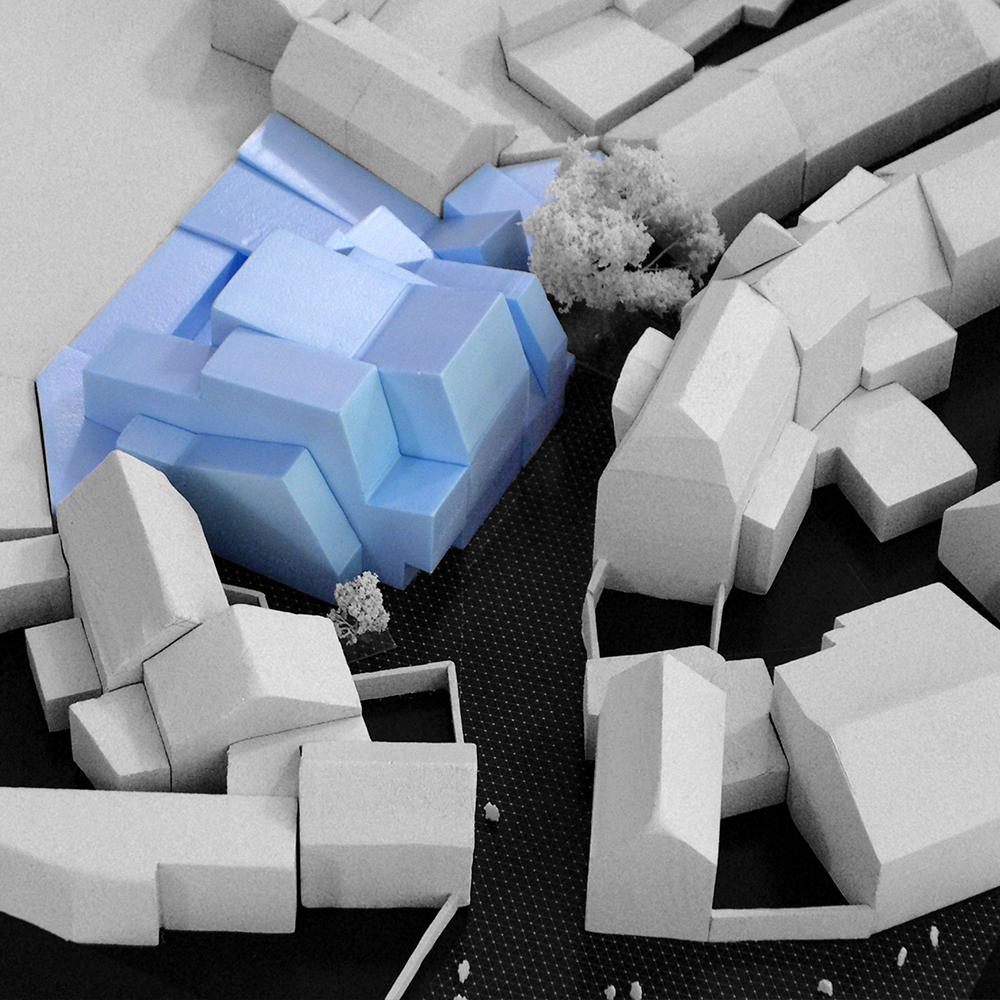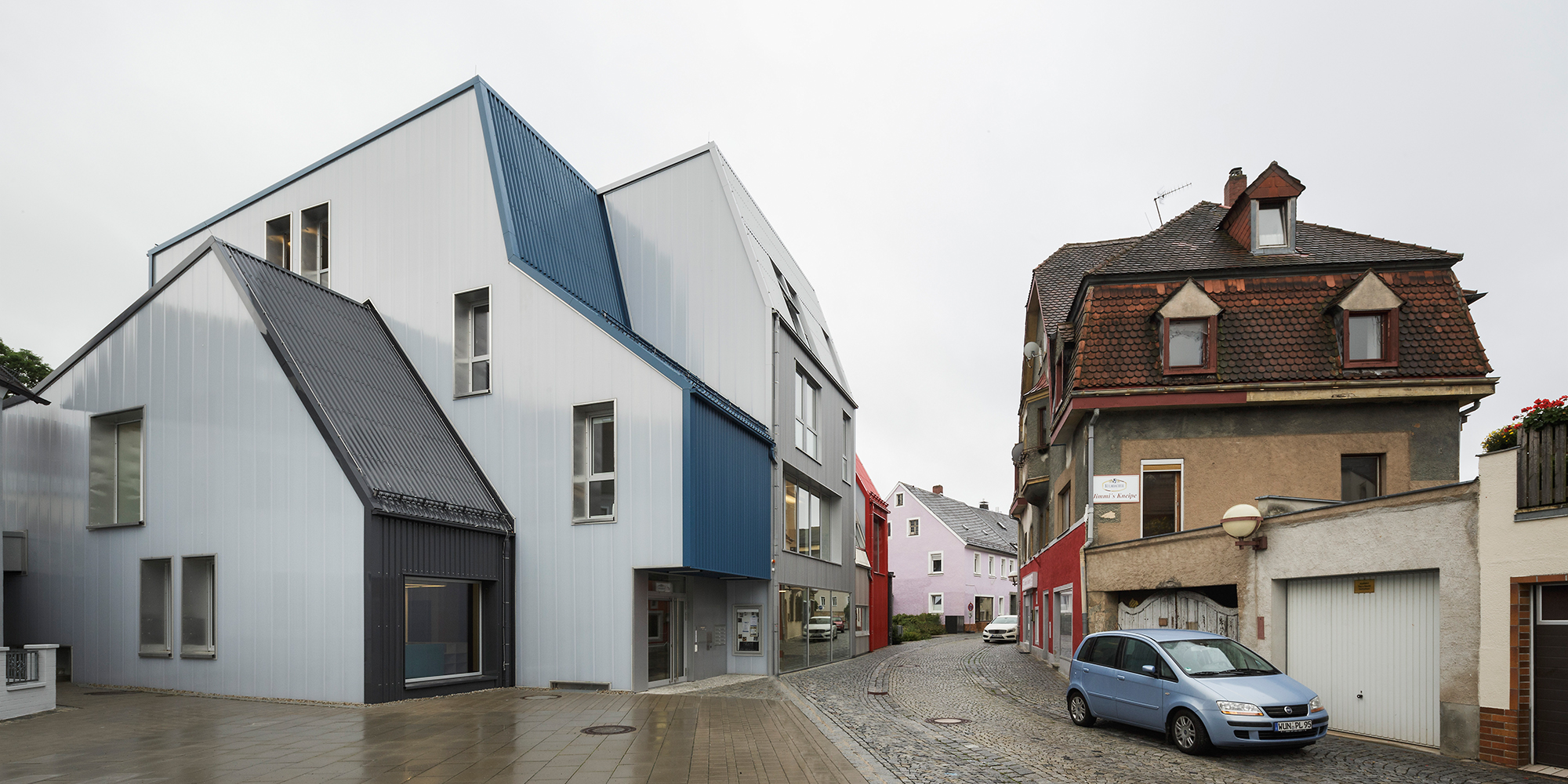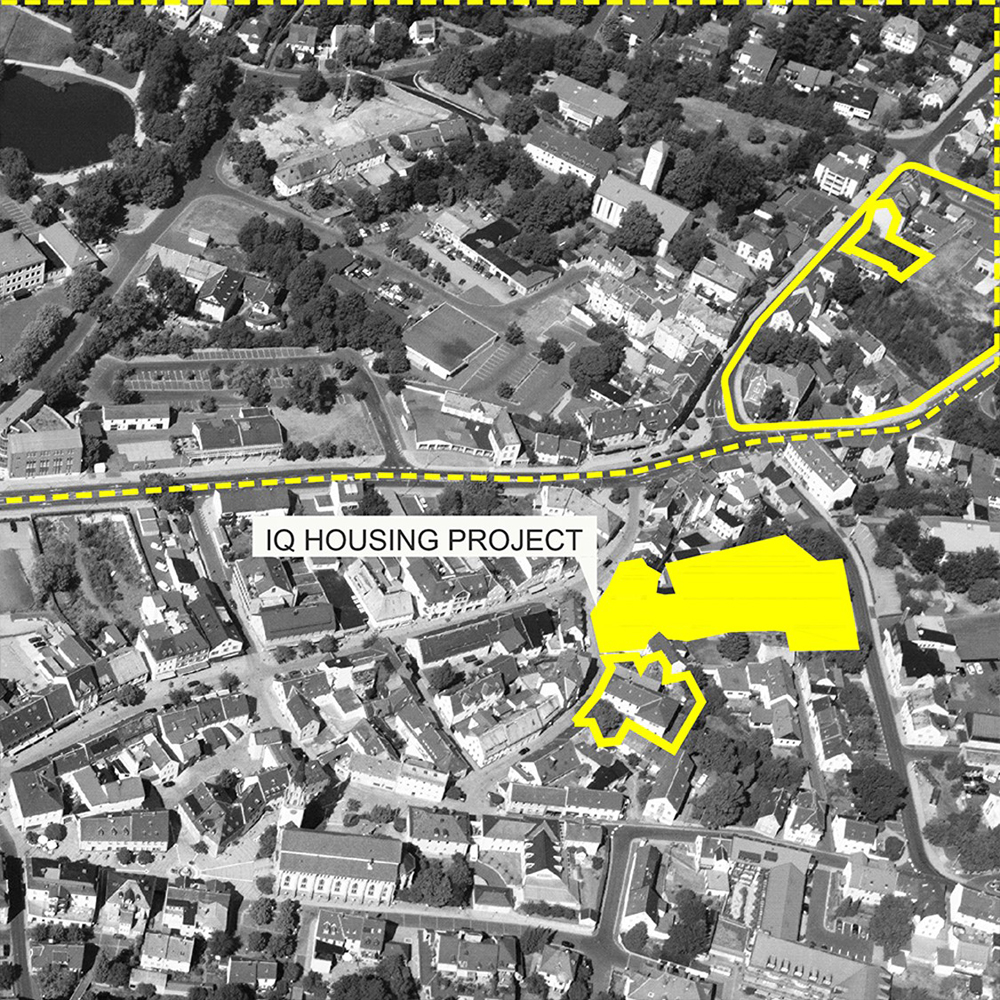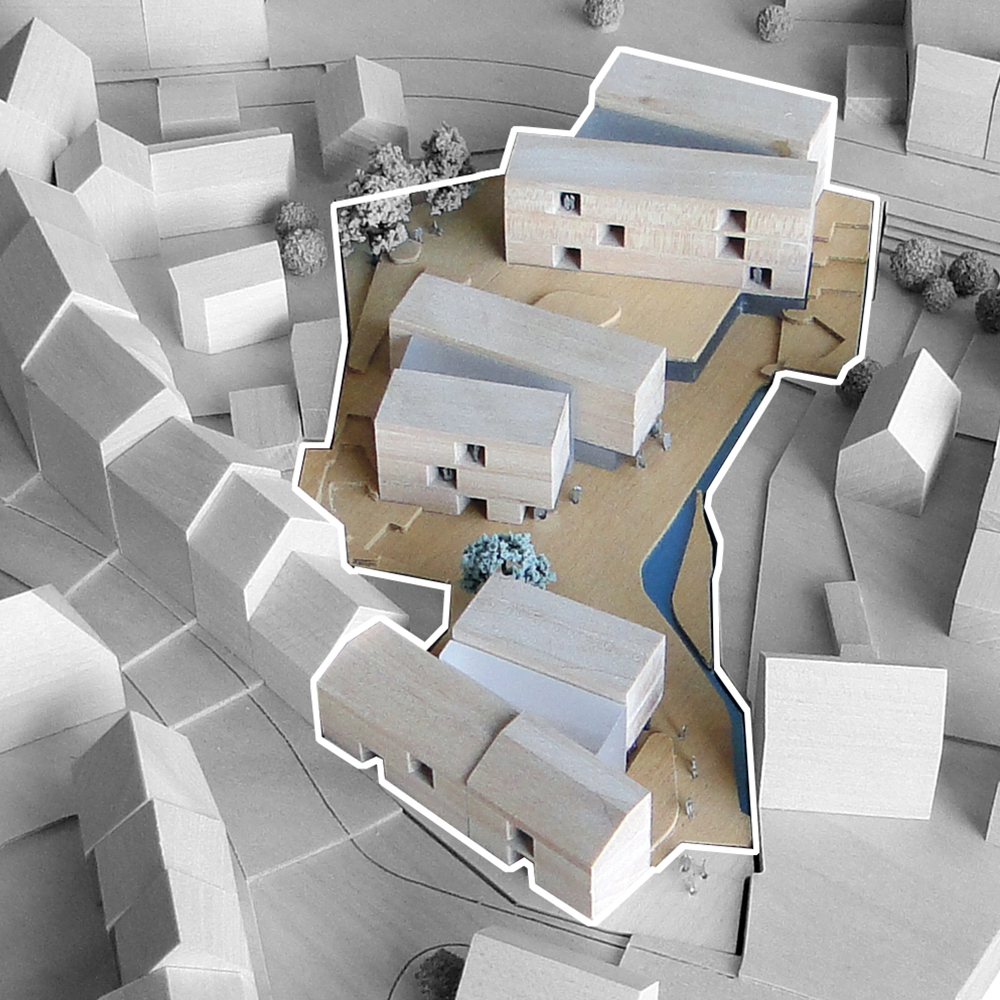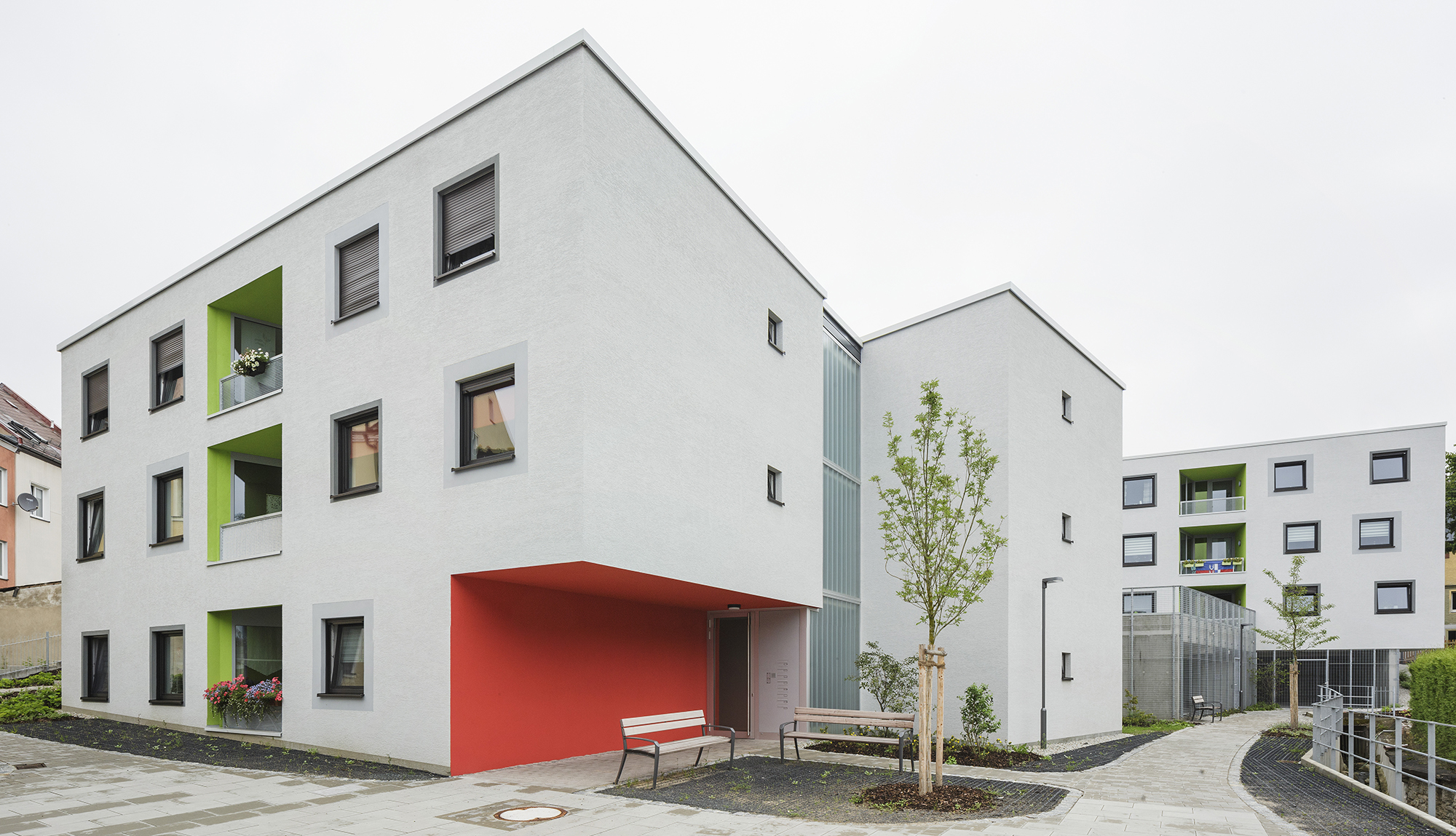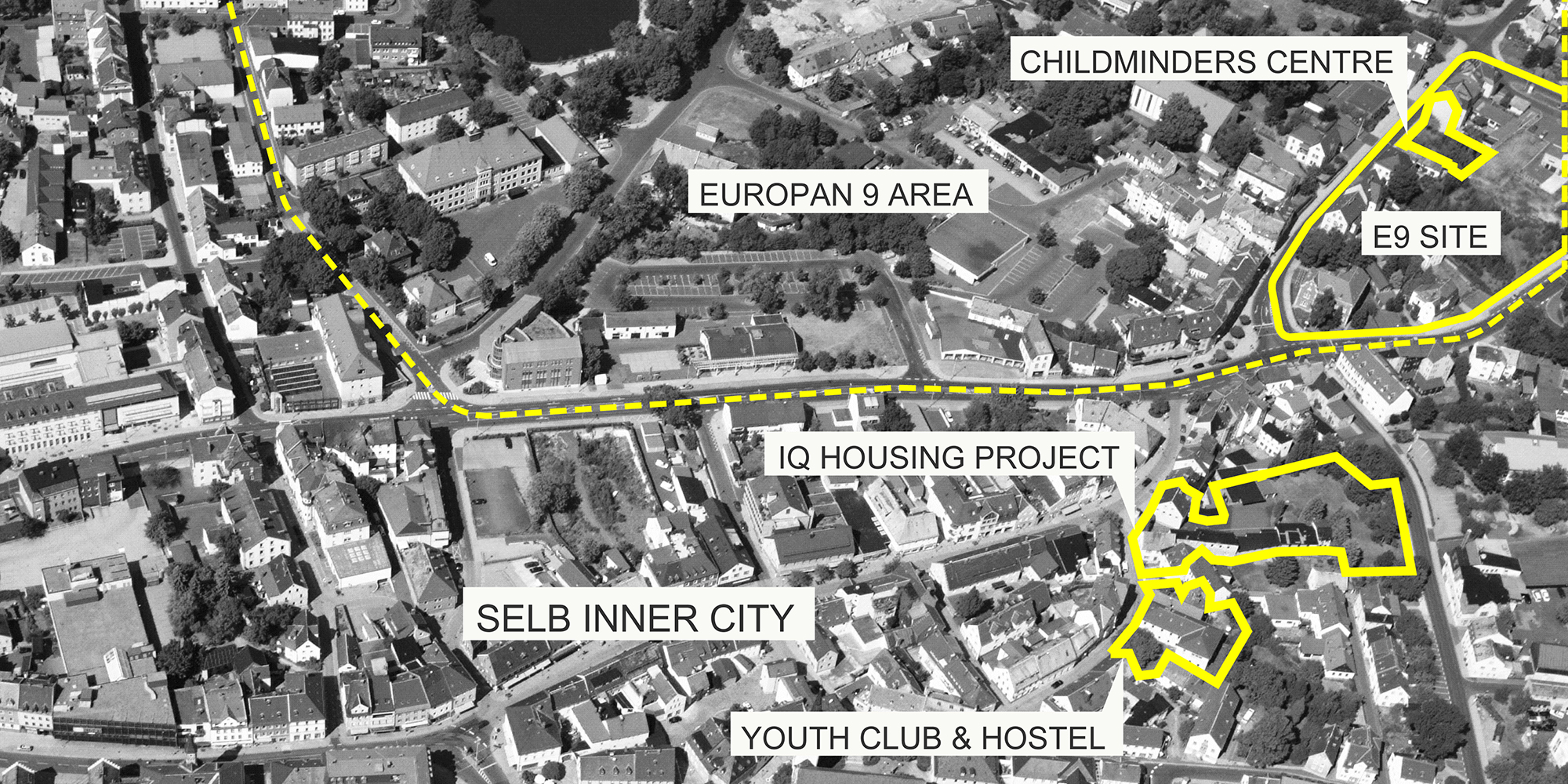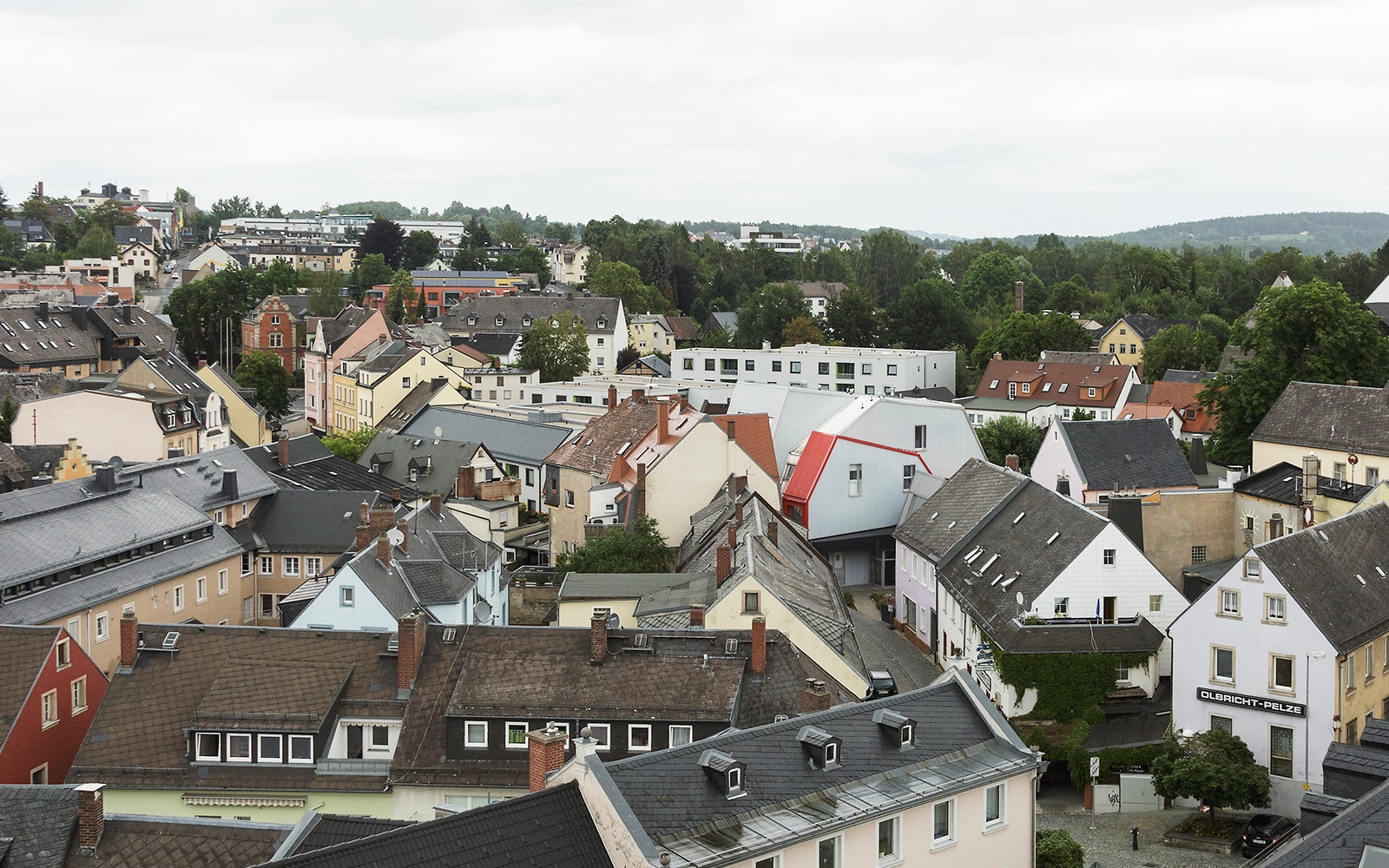
Urban Regeneration in Selb, Germany (Acupuncture Therapy) |
||
| Date: | 2008-2016 | |
| Status: | Europan 9 Implementation. 1st Prize Europan 9 Selb International Competition, 1st Prize “IQ Innerstädtische Wohnquartiere” Invited International Competition | |
| Category: | Europan 9 Selb, Urban Regeneration, Completed | |
| Tags: | Europan 9 Selb, Urban Regeneration Selb, Urban Acupuncture | |
Credits
Client: City of Selb (Stadt Selb)
Location: Inner City of Selb. Germany.
Program: Urban Regeneration Plan for the inner city of Selb (Childminders Centre, Youth Club, Youth Hostel, IQ Experimental Subsidized Housing)
Strategic Area: inner city of Selb (11Ha)
Built Area: 7.410,00 m2
Budget: 12.670.000,00€
Architecture: Gutiérrez-delaFuente, TallerDE2
Local Partner: SelbWERK GmbH, Helmut Resch
Collaborators: ZK for E9 (competition phase)
Structure: Ingenieurbüro Schultheiß-Dietel
Installations: Ingenieurbüro Peter Möller, Ingenieurbüro IHP Versorgungstechnik
Lighting: Ingenieurbüro Netzel + Rennert
Fire Protection: Ingenieurbüro Eulitz
Construction: Karl Roth Baumeister GmbH & Co.KG
Surveyor: SelbWERK GmbH
Photographs: Fernando Alda, Feigfotodesign
Video: Bauwelt TV Film
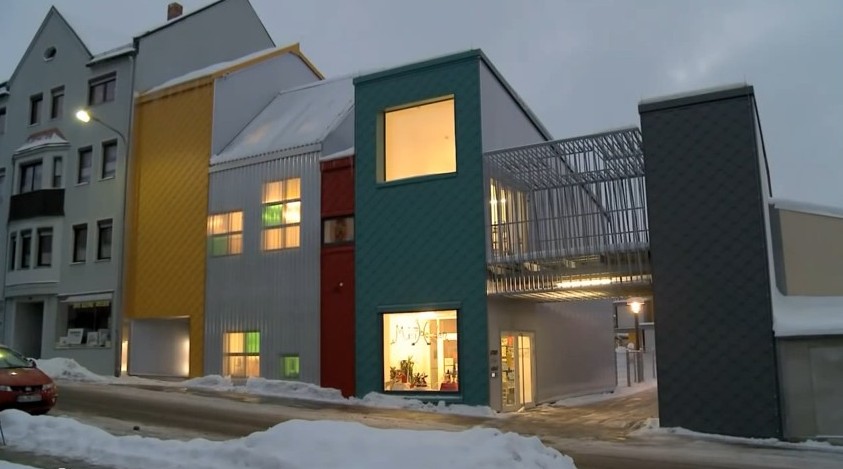
Awards (Haus der Tagesmütter):
● Bauwelt Award 2013 «First Works»
● Luis M. Mansilla COAM Award 2013
● VII NAN Architecture Award 2013
● Architektouren der ByAK 2014
● Finalist XII BEAU Spanish Biennal 2013
● Finalist IV Edition Arquia/Próxima Award 2014
● Shortlisted FAD Awards 2014
A PREVENTIVE ACUPUNCTURE THERAPY FOR THE URBAN REGENERATION OF A SHRINKING CITY
● Selb, a shrinking city: Selb is a German city located in the north of Bavaria. It’s a case study of the contemporary phenomenon of the post-industrial cities in Europe. Selb was a mono-oriented industrial city whose main activity used to be the porcelain industry. The crises of the 1990s caused large-scale unemployment, people started leaving Selb, and since then the city population has been ageing. Selb became a shrinking city. The goal for the competition was to create a new idea for the urban regeneration of the inner city.
● Europan 9 Implementation:the urban regeneration plan for the city of Selb has been already developed as the implementation of the 1st Prize won in the International Competition Europan 9 in the city of Selb, Germany. The future-oriented process proposed in the competition is being able to integrate the local realities, the social time, the citizen hopes, and all kind of expected or unexpected contingencies, following the four main principles from the winning entry. (1st) At urban structure level: densify the perimeter of the blocks to redefine the structure and clarify the space of the street. (2nd) At public space level: create a network of semi-public shared spaces in the interior of the blocks, supported by the high degree of porosity of the new fabric. (3rd) At programmatic level: establish a catalogue of very specialized programmatic stripes, strongly anchored in the local context, working in a short term just as extensions (prosthesis) of the existing houses , and creating by addition a new urban tissue in a medium-long term including facilities and residential units. (4th) At long-lasting process level: design an open framework (an action plan) to guide the process throughout the time.
● Urban regeneration: the Selb plan is an innovative urban tool, alternative to the traditional master plan, it’s an open and future-oriented process to revitalize the city center of the shrinking city of Selb by integrating and attracting young population. A Preventive Urban Acupuncture Therapy is proposed, consisting on making small insertions (with big effects in the surroundings) in the existing urban fabric to trigger the inner city reactivation. Focusing on the city core and betting on youth as a strategic approach to the shrinkage phenomenon.
● Reconsidering: thanks to the robustness of the plan proposed in the winning entry, it was maintained alive in all the critical implementation steps. If in the competition entry the main asset was to deal with the negative demographic trends of a shrinking city focusing in the elderly people group, with a so called “healing acupuncture therapy”, during the implementation process, all the actors reconsidered this strategy, and decided to reoriented it towards a “preventive acupuncture therapy”, focusing on the low part of the demographic pyramid: children and young people. This change of attitude, “prevention rather than the cure”, opened a new scenario in which the following projects have been developed: Haus der Tagesmütter (Childminders Centre) for babies and children, Jugendzentrum & Jugendhotel (Youth Club & Hostel, and Intergenerational Centre) for teenagers and young people, and IQ Experimental Subsidized Housing (IQ innerstädtische Wohnquartiere) for young families.
